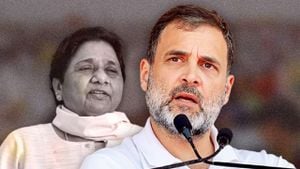On February 21, the world celebrates International Mother Language Day, established by the United Nations Educational, Scientific and Cultural Organization (UNESCO) in 1999 to recognize the importance of preserving native and mother languages across all cultures. This observance is particularly significant in the United States, where linguistic diversity echoes throughout the nation. The nation, known for its melting pot of cultures, grapples with sociopolitical tensions surrounding language use, especially with the Spanish language, which has been the subject of discriminatory remarks and rhetoric.
Interestingly, Spanish is the second most widely spoken language in the U.S., comprising around 61.6% of the 68 million people who speak languages other than English at home, according to the U.S. Census Bureau data from 2022. This substantial figure reflects not only the growth of the Hispanic community but also its rich contributions to American culture. Nonetheless, the political climate continues to challenge this diversity. For example, during his 2016 presidential campaign, Donald Trump famously declared, “This is a country where we speak English, not Spanish.” His repeated assertions have undeniably shaped the rallying cries of those opposing bilingualism.
This politically charged atmosphere led Carlos Eduardo Espina, a Uruguayan-American activist, to respond dynamically on social media. Espina's TikTok features him saying, “The United States is a country where people speak English, Spanish, and many other languages. That’s what makes it so great and beautiful.” His message serves as both affirmation and celebration of linguistic diversity, which empowers individuals from diverse backgrounds to embrace their heritage.
Despite the predominance of English, it’s worth noting the absence of any official language designation at the federal level. This detail highlights the complexity and nuance of American identity, where multiculturalism should remain not merely tolerated but celebrated. Instead, we find certain groups promoting anti-Spanish attitudes. Political actions have mirrored these sentiments; Trump’s administration removed the Spanish-language version of the White House website mere minutes after he took office.
International Mother Language Day provides the perfect opportunity to counter these divisive narratives by encouraging pride and unity among speakers of various languages. It fosters the belief among many Latinos and allies alike—through social media influencers such as Jazlyn Guerra, journalist Jorge Ramos, and popular musician Bad Bunny—that bilingualism is not merely acceptable, but rather something to be proud of.
Espina isn't alone. A video featuring several renowned actors—including Cristo Fernández, Danny Ramírez, Tomás Mier, and Wilmer Valderrama—emphasizes the honor and privilege of speaking multiple languages. They proclaim, “It is an honor and a privilege to be able to speak more than one language,” illustrating how language transcends mere communication; it embodies identity, culture, and heritage.
Highlighting these perspectives is necessary, especially amid growing tensions against minority languages. Social media has emerged as a powerful platform for individuals and groups to advocate for the preservation of linguistic and cultural diversity. Content creators are not just amplifying their voices but also connecting with broader communities to assert their identity and resist political narratives aimed at suppressing them.
On this day, let us reflect on the fundamental right of individuals to speak and preserve their mother languages. The value of languages goes beyond their utility; they are embroiled deeply within the cultural identities and traditions of every community. International Mother Language Day serves as both celebration and reminder: let us continue to advocate for multilingualism as strength and power, bringing together people of all backgrounds.
Indeed, fostering inclusive environments where all languages can be spoken, appreciated, and taught should be our collective goal. While maintaining momentum against forces promoting anti-bilingual attitudes, we must equally champion the joy found within the richness of diverse languages. By doing so, we solidify linguistics not just as a phenomenon of communication, but as pillars of culture and community, serving as powerful catalysts for unity.



